Oct. 31, 2023
Prelims Pointers
Oct. 31, 2023
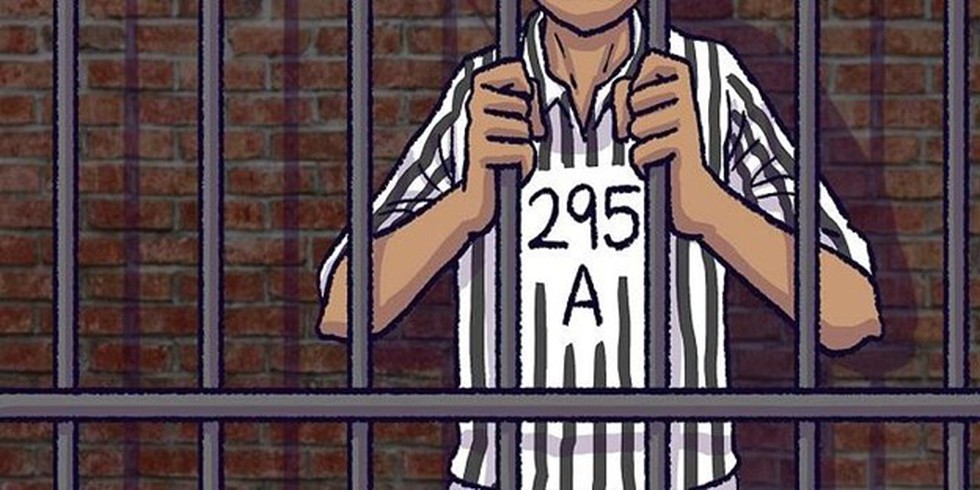
About Section 295A of the IPC:
- The object of Section 295-A is to punish deliberate and malicious acts intended to outrage the religious feelings of any class by insulting its religion or religious beliefs.
- This section only punishes an aggravated form of insult to religion when it is perpetrated with the deliberate and malicious intention of outraging the religious feelings of a class.
- Ingredients of Section 295-A:
- The accused must insult or attempt to insult the religion or religious beliefs of any class of citizens of India.
- The said insult must be made with a deliberate and malicious intention of outraging the religious feelings of the said class of citizens.
- The said insult must be by words, either spoken or written, by signs, by visible representation, or otherwise.
- Section 295A IPC is a cognisable, non-bailable, and non-compoundable offence, and police can register an FIR anywhere in the country at the instance of purportedly aggrieved complainants.
- What has the Supreme Court ruled?
- In 1957, a Constitution Bench of the Supreme Court upheld the constitutionality of the said section in ‘Ramji Lal Modi v. State of U.P.’
- The Court held that Section 295A IPC does not penalise any and every act of insult to or attempt to insult any religion or the religious beliefs of a class of citizens.
- The Court cautioned that only those acts of insult or attempts to insult can be penalised under this provision if they are perpetrated with the deliberate and malicious intention of outraging the religious feelings of that class.
- The Court further clarified that the provision would only apply to aggravated forms of insult to religion that are calculated to disrupt public order.
Prelims Pointers
Oct. 31, 2023
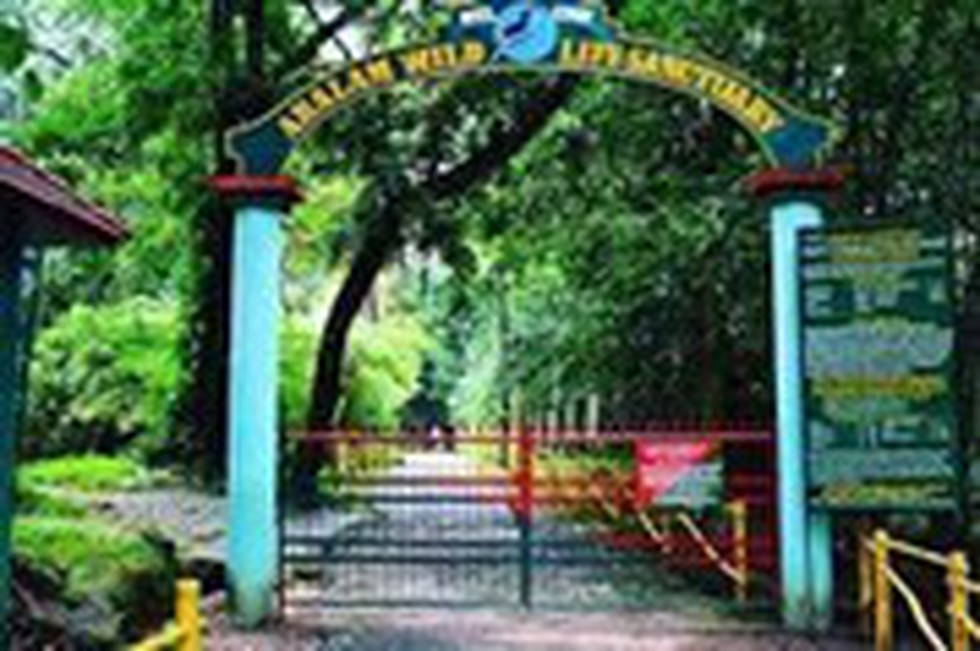
About Aralam Wildlife Sanctuary:
- It is located on the western slopes of the Western Ghats.
- It is the northernmost wildlife sanctuary in Kerala and was established in 1984.
- It is contiguous with Wayanad-Brahmagiri, Wayanad's northern slopes, and the Protected Areas of Karnataka State, namely the Brahmagiri Wildlife Sanctuary and also the forests of Coorg.
- The highest peak in this sanctuary is Katti Betta.
- It is the only protected area of the West Coast Tropical Evergreen Forest of Dipterocarpus-Mesua- Palaquium type.
- The river Cheenkani flows through this wildlife sanctuary.
- Vegetation: Forest coast tropical evergreen and west coast semievergreen forests are predominant here.
- Flora: The common trees in the semievergreen areas are Cinnamomum Zeylanicum, Hopea parviflora, Largestroemia lanceolata, Xyliaxylocarpa, Mallotus and Philippinensis.
- Fauna: Deer, boar, elephant, and bison are quite common. Leopard, jungle cat and various types of squirrels are sighted here.
Prelims Pointers
Oct. 31, 2023
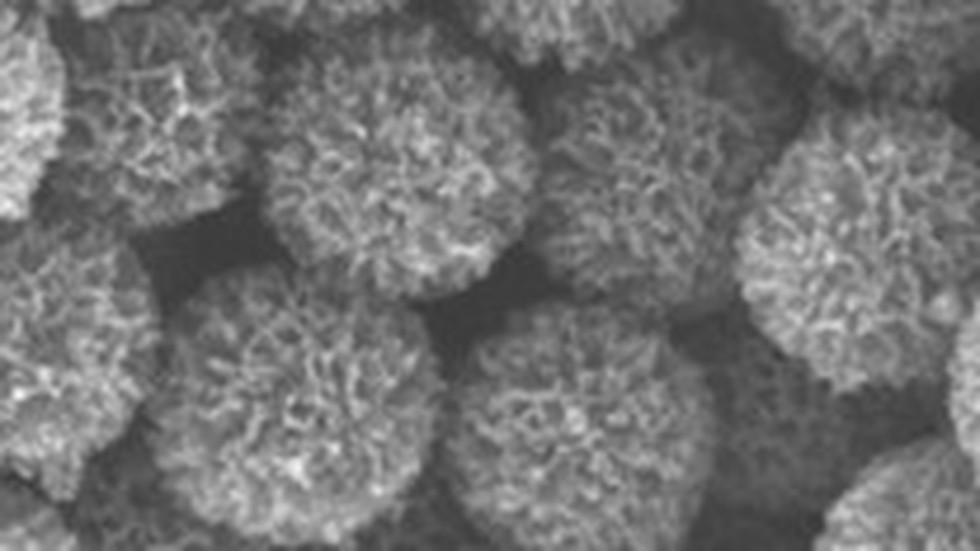
About Carbon nanoflorets:
- These are like tiny marigold flowers made only of carbon, which are called as the material carbon nanoflorets.
- Process of synthesis
- Researchers heated a special form of silicon dust called DFNS (for dendritic fibrous nanosilica) in a furnace.
- Once heated, she introduced acetylene gas into the chamber.
- The white powder turned black, a sign that carbon had been deposited on the DFNS.
- Then they collected the black powder and treated it with a strong chemical that dissolved the DFNS away, leaving carbon particles behind.
- The structure of the silicon particles – 50-1,200 nanometers in size—resembled spikes arranged around a sphere.
- Observation
- They reported that these nanoflorets could absorb sunlight at many frequencies and convert it to heat with unprecedented efficiency.
- The nanoflorets also didn’t easily dissipate the heat generated into the environment, making the material a good candidate for heat.
- The nanoflorets converted the light energy they absorbed into thermal energy—a process called solar-thermal conversion—with a remarkable efficiency of 87%.
- The carbon nanoflorets’ high efficiency comes from three properties.
- The nanoflorets absorb three frequencies in sunlight – infrared, visible light, and ultraviolet, while other common materials absorb only visible and ultraviolet light.
- Shape: As light falls on the material, the carbon cones ensure that very little is reflected back.
- Llong-range disorder: Parts of the structure at some distance from each other possess different physical properties. As a result, heat waves in the material aren’t carried over long distances, reducing the amount of heat dissipated away.
Prelims Pointers
Oct. 31, 2023
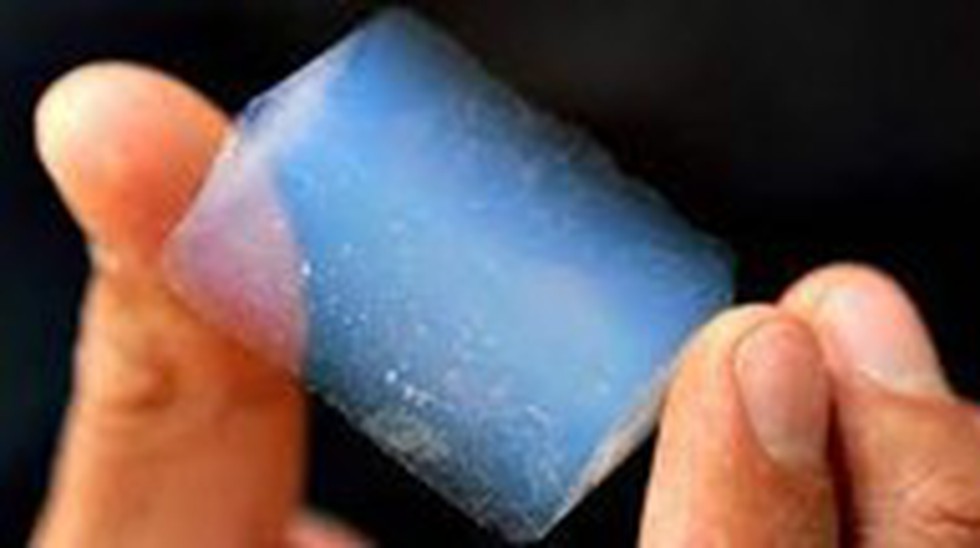
About Aerogels:
- Aerogels are composed mostly of air and can be used to remove contaminants.
- They, also known as ‘solid air’ or ‘frozen smoke', are excellent adsorbents (a solid substance used to remove contaminants) and are incredibly lightweight solids composed mostly of air.
- In addition, they offer advantages like adjustable surface chemistry, low density, and a highly porous structure.
A newly developed aerogel adsorbent
- The research team developed a silica aerogel modified with graphene.
- They employed a method called 'supercritical fluid deposition' to prepare these modified aerogels and studied their effectiveness.
- The Graphene-doped modified silica aerogels (GO-SA) were found to exhibit efficiency in purifying water, attracting and removing contaminants due to graphene's unique molecular structure.
- Under real-life conditions mimicked in their experiments, the material removed over 85% of pollutants in controlled settings and more than 76% in continuous flow conditions.
Prelims Pointers
Oct. 31, 2023
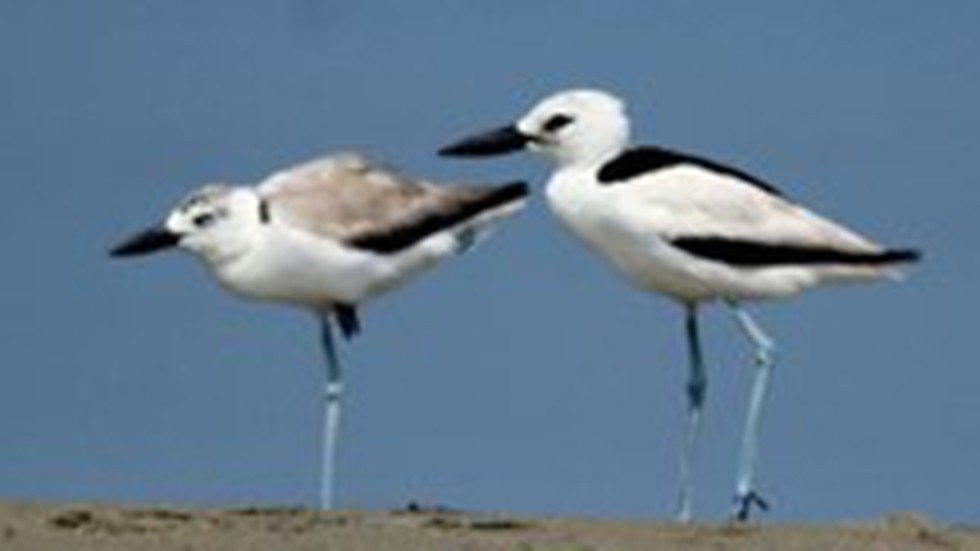
About Crab-plover:
- It is a long-legged, black and white bird of Indian Ocean coasts, related to plovers and allied species of shorebirds.
- This is the only shorebird that lays white eggs, and chicks remain inside the burrows until the fledging stage.
- The chicks are semi-nidifugous, unlike chicks of other shorebirds that leave the nests shortly after hatching.
- Distribution:
- They are residents of the coasts and islands of the Indian Ocean.
- They breed around the Arabian Sea of Pakistan, the Gulf of Oman and the Persian Gulf, Red Sea, Somalia, the Andaman Islands, Sri Lanka, Tanzania, and Madagascar.
- Habitat
- These birds inhabit sandy coastlines, mudflats, estuaries, lagoons, exposed coral reefs, and rocky shorelines.
- During the breeding season, they can also be found in sand dunes.
- Conservation Status
- IUCN: Least Concern
- It is one of the species to which the Agreement on the Conservation of African-Eurasian Migratory Waterbirds (AEWA) applies.
Key points about Point Calimere sanctuary
- It was established in the year 1967 and is situated in the state of Tamil Nadu.
- It houses the famous bird sanctuary of Vedaranyam and the Talaignayar forests.
- It is flanked by the Bay of Bengal in the east and Palk Strait in the south.
- It primarily focuses on the protection and conservation of the black antelopes, an endangered and endemic species that are found in this region.
- It is designated as a Ramsar site.
Prelims Pointers
Oct. 31, 2023
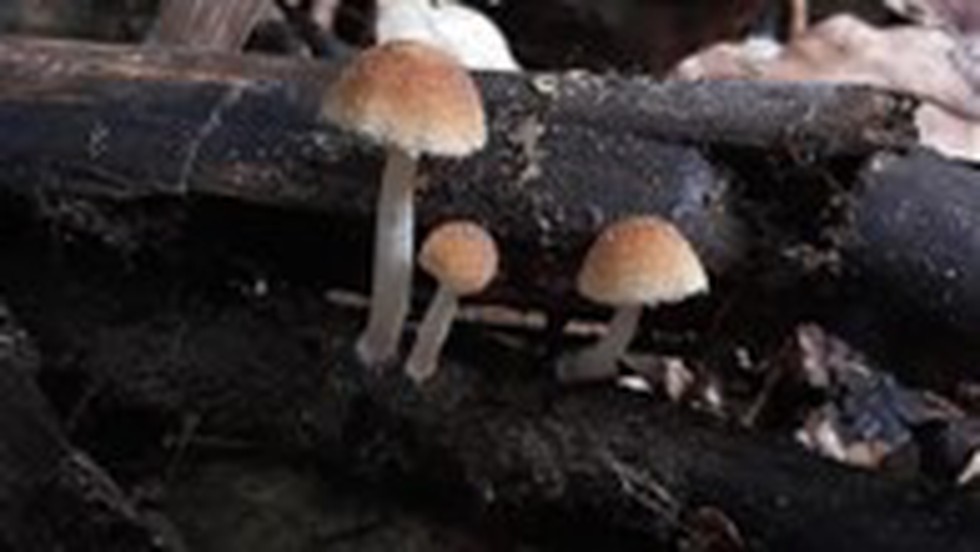
About Candolleomyces albosquamosus:
- It is a new species belonging to the genus Candolleomyces, which is relatively small genus with just 35 species recognised worldwide.
- It has white woolly scale-like structures on its pileus or cap.
- It grows to a height of just about 58 mm.
- The ‘cap,’ or pileus, of a mature Candolleomyces albosquamosus is 12 mm to 38.5 mm in diameter and bell-shaped.
- The honey-yellow coloured pileus turns brownish-gray or brownish-beige with age.
- The'stipe' '(the stem or stalk) of the mushroom is white in colour and cylindrical.
- Habitats of Candolleomyces albosquamosus include dead logs or bamboo culms in the natural forest.
What are mushrooms?
- Mushrooms constitute secondary saprophytic fungi of the forest ecosystem.
- Secondary saprophytic fungi play a very important role in the decomposition of plant litter.
- The Western Ghats region in Kerala is rich in fungi, many of which could also be described as endemic to the region,
Prelims Pointers
Oct. 31, 2023

About District Central Co-operative Banks (DCCBs):
- A DCCB is a rural cooperative bank operating at the district level in various parts of India.
- It is established to provide banking to the rural hinterland for the agricultural sector, with the branches primarily established in rural and semi-urban areas.
- DCCB provides finance to all the co-operative societies in the district, conducts activities, and provides banking services according to the provisions of the co-operative act and banking act.
- They act as a link between the primary credit co-operative society and the State Co-operative Bank.
- At the district level, DCCB works as a banker of state government. Educational institutions, Zilla Parishad, Panchayat Samiti, Gram Panchayat, cooperative societies, etc have accounts in this bank.
- All the financial transactions of co-operative sector are conducted through DCCB.
- DCCBs have three sources of funds:
- Their own share capital and reserves
- Deposits from the public and
- Loans from the state co-operative banks
- The main functions of the DCCBs are
- To meet the credit requirements of member-societies
- To perform banking business
- To act as a balancing centre for the Primary Agricultural Credit Societies (PACS) by diverting the surplus funds of some societies to those which face shortages of funds
- To undertake non-credit activities
- To maintain close and continuous contact with PACS and provide leadership and guidance to them
- To supervise and inspect the PACS and
- To provide a safe place for the investment of the resources of PACs
- They also lend directly to the public for non-agricultural purposes within the area of operation of their branches.
Prelims Pointers
Oct. 31, 2023
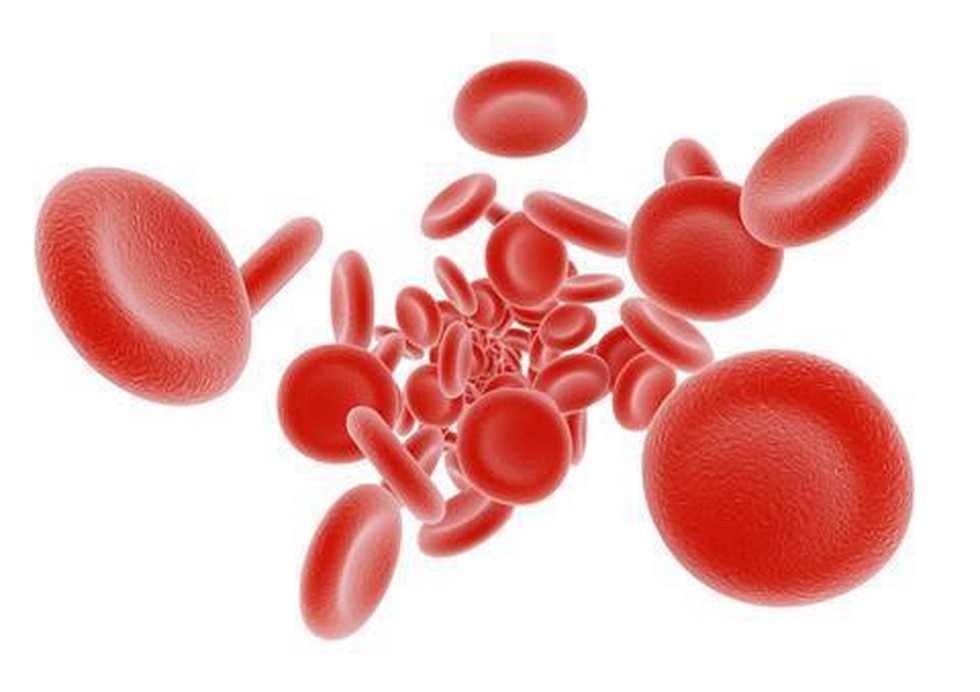
About Haemoglobin (Hb):
- It is an iron-containing protein found in the red blood cells that carries oxygen from the lungs to the body's tissues and returns carbon dioxide from the tissues back to the lungs.
- It is made up of four protein molecules (globulin chains) that are connected together.
- Haemoglobin forms an unstable, reversible bond with oxygen. In the oxygenated state, it is called oxyhemoglobin and is bright red; in the reduced state, it is purplish blue.
- It also plays an important role in maintaining the shape of the RBCs. In their natural shape, RBCs are round with narrow centers resembling a donut without a hole in the middle. Abnormal haemoglobin structure can, therefore, disrupt the shape of RBCs and impede their function and flow through blood vessels.
- Haemoglobin levels vary from person to person. Men usually have higher levels than women.
- What does a low haemoglobin level mean?
- A low haemoglobin level is referred to as anemia or low red blood count.
- A lower than normal number of RBCs is referred to as anemia and haemoglobin levels reflect this number.
- Some of the more common causes of anemia are:
- loss of blood (traumatic injury, surgery, bleeding, colon cancer, or stomach ulcer),
- nutritional deficiency (iron, vitamin B12, folate),
- bone marrow problems (replacement of bone marrow by cancer),
- suppression by red blood cell synthesis by chemotherapy drugs,
- kidney failure, and
- abnormal haemoglobin structure (sickle cell anemia or thalassemia).
Prelims Pointers
Oct. 31, 2023

About the SIM-Swap Scam:
- All banking applications are linked to phone numbers, which help in generating OTPs (to authenticate transactions) or receiving important bank-related messages.
- In the SIM swap scam, fraudsters first take personal details such as phone numbers, bank account details, and addresses with the help of phishing or vishing.
- After receiving the personal information, fraudsters visit the mobile operator’s retail outlet, posing as the victim with forged ID proof, and report a fake theft of the victim’s SIM card and/or mobile phone.
- By doing this, they attain a duplicate SIM.
- Notably, scamsters can get a duplicate SIM even when the original is working, as they reported a theft of the original SIM card.
- Unlike other scams, where scamsters trick people into giving OTPs and private information on a phone call, the SIM swap scam doesn’t require direct communication with the victims.
- However, fraudsters do give missed calls to their victims so that the latter leave their phones and ignore the lost network connectivity.
- When the SIM is swapped, the accused gains control of the entire SIM. All calls and messages go through their SIM only.
- Once in control of the SIM card, they are able to obtain passwords and OTPs that allow them to access their targets' bank accounts.
What is phishing?
- Phishing is a technique in which scamsters send malware links to victims through mail or messages.
- Once the link is opened, the malware steals all of the victim’s personal information.
Prelims Pointers
Oct. 31, 2023
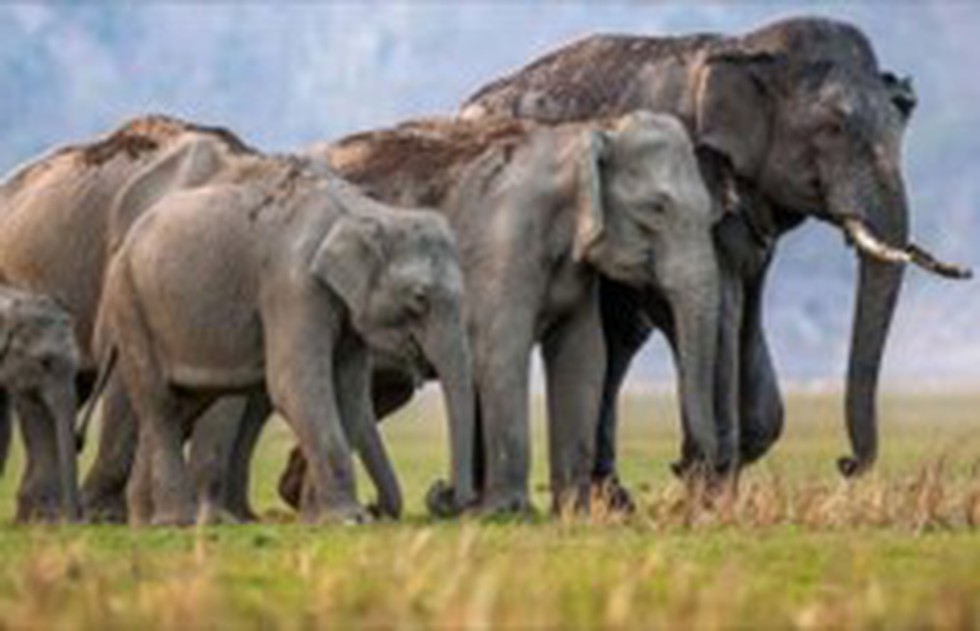
About Rajaji Tiger Reserve:
- Location:
- Rajaji Tiger Reserve (earlier Rajaji National Park) is located in the Shivalik range of the Himalayas and spread over 820 kms.
- It covers a part of over three districts of Uttarakhand: Haridwar, Dehradun, and Pauri Garhwal.
- It was named after the famous freedom fighter Rajgopalachari, popularly known as "Rajaji".
- The park was created in 1983 by the amalgamation of three sanctuaries: Rajaji Sanctuary and National park (estd. 1948), Motichur Sanctuary (estd. 1964), and Chilla sanctuary (estd. 1977).
- On 20 April 2015, its name was changed to Rajaji Tiger Reserve.
- It is famous as an elephant habitat, as there are around 600 elephants in Rajaji.
- It's location in a transition zone between temperate western Himalaya and central Himalaya enhances the species diversity.
- Vegetation: The area is covered with diverse forest types ranging from semi-evergreen to deciduous and from mixed broad-leaved to Terai grassland and has been classified as Indus-Ganges Monsoon Forest type.
- Flora:
- Lofty strands of Sal trees (Shorea Robusta) dominate most parts of the reserve.
- Other popular flora found here include Rohini, Palash, Shisham, Sal, Sandan, Khair, Arjun, Baans, Semul, Chamaror, etc.
- Fauna: It has a sizeable population of Tiger and Asian Elephants. It is home to a variety of wild animals like Leopard, Jungle cat, Himalayan Black Bear, Sloth Bear, Striped Hyena, Goral, Sambar, Wild Pig, Spotted Deer, Barking Deer, etc.
Oct. 30, 2023
Prelims Pointers
Oct. 30, 2023
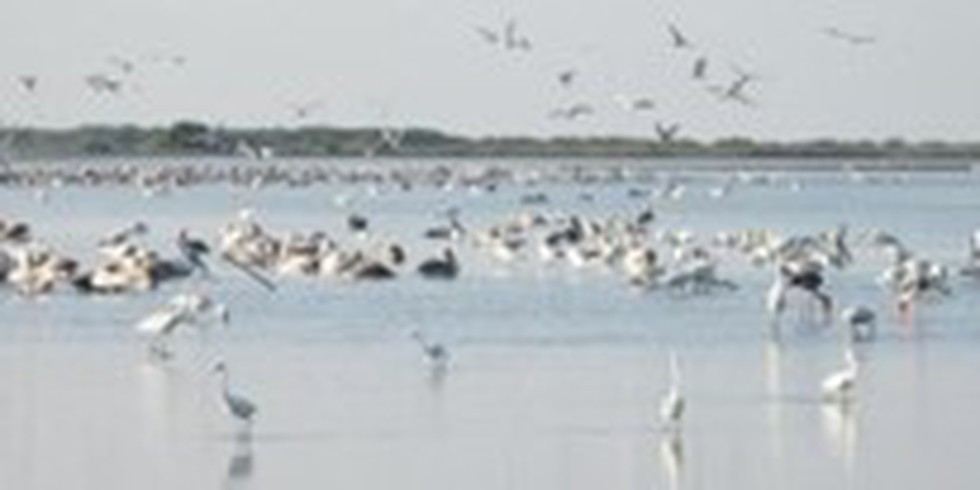
About Point Calimere Wildlife Sanctuary:
- Point Calimere Wildlife Sanctuary was established in the year 1967 and is situated in the state of Tamil Nadu.
- It houses the famous bird sanctuary of Vedaranyam and the Talaignayar forests.
- It is flanked by the Bay of Bengal in the east and Palk Strait in the south.
- It primarily focuses on the protection and conservation of the black antelopes, an endangered and endemic species that are found in this region.
- It is designated as a Ramsar site.
- Flora: It has mangroves, tropical evergreen forests, and grassland ecosystems.
- Fauna: Wild boar, macaque, black buck, chital, Great flamingo, Painted Stork, Little Stint,seagull,l and Brown-headed gull are normally found in the sanctuary.
Prelims Pointers
Oct. 30, 2023
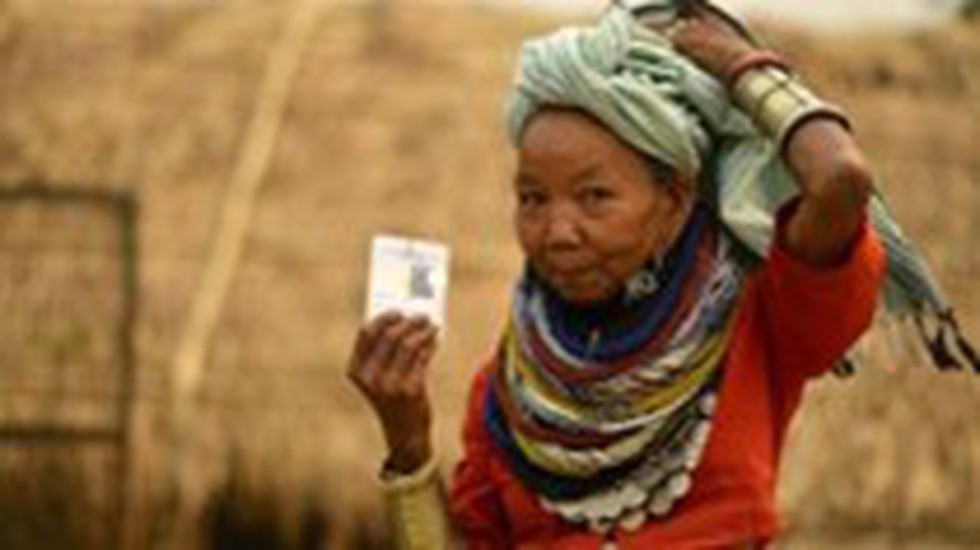
About Bru refugees:
- Bru, also known as Reang, is a community indigenous to the Northeast, living mostly in Tripura, Mizoram, and Assam.
- In Tripura, they are recognised as a Particularly Vulnerable Tribal Group.
- They belong to Indo-Mongoloid racial stock. Their languages have an affinity with Austro-Asiatic groups under the Tibeto-Burman family.
- Ethnically, they are divided into two major clans, namely Meska and Molsoi.
- They speak a language known as "Kaubru,” which has a tonal effect on the Kuki language, though broadly, it is the Kok-Borok dialect.
- Occupation: They are still a nomadic tribe, and a large number among them maintain their livelihood involving Hilltop Jhum Cultivation and other food gathering activities.
- They believe in spirits and the existence of a soul.
- By religion, they are Hindus, and most of their deities are akin to gods and goddesses of the Hindu faith.
- They are traditionally endogamous and do not marry outside their community.
- In their tradition, the village council chief, known as "RAI,” permits Divorce and Widow marriage.
Prelims Pointers
Oct. 30, 2023

About Photocopying:
- It is a set of techniques with which to duplicate some content using, among other things, light. However, the contemporary colloquial use of the word ‘photocopying’ refers almost exclusively to xerography.
- Both the word ‘xerography’ and the name ‘Xerox’ come from the Greek root-word ‘xero’, meaning ‘dry’.
- This is because xerography is a type of photocopying method whose process doesn’t involve messy liquid chemicals.
- Xerographic machines are in ubiquitous use around the world today to quickly and cheaply reproduce printed material.
How does xerography work?
- Xerography has a few basic elements.
- Photoconductive surface: A surface coated with a photoconductive material. Such a material, when exposed to light, allows electrons to flow through it (i.e.,. conducts electricity) but blocks them when it’s dark.
- This surface is negatively charged by placing a thin, negatively charged wire with a high voltage next to it.
- Then, the sheet of paper to be copied is illuminated with a bright light. The darker parts of the paper – where something is printed, i.e. – don’t reflect the light whereas the unmarked parts do.
- This reflected light is carried by lenses and mirrors to fall on the photoconductive surface.
- In the parts of the surface where light falls, the photoconductive material will become conductive and allow the electrons near its surface to dissipate downwards (into a grounding).
- So the parts that remain negatively charged at the end of this step will correspond to parts of the paper-to-be-copied (TBC) where something was printed.
- Next, a powdery substance called toner is applied to the surface.
- The toner is positively charged, so it will settle where negative charge persists on the surface.
- The surface then transfers the pattern of toner on it to a sheet of paper. The paper has a stronger negative charge that causes the toner to jump.
- Finally, the toner is heated so that it melts and fuses with the paper. This is the paper that rolls out of the photocopying machine, the whole process having been completed in a few seconds.
- In practice, a rotating drum is used instead of a flat surface, and the paper TBC is illuminated by a flashing or stroboscopic light or a moving scanner.
Prelims Pointers
Oct. 30, 2023

About the Hostile Activity Watch Kernel (HAWK) system:
- It is Cloud Based Information Management System designed to manage interlinked databases of wildlife crime, wildlife criminals, and wildlife mortality.
- It will help officials analyse the information and develop actionable intelligence to prevent wildlife crimes and curb Illegal Wildlife Trade (IWT).
- Features
- The system connects the entire state forest department in real-time and the access is restricted through access levels.
- This is a large ERP model cloud based system that uses mobile and desk top interfaces to manage data.
- The entire HAWK system is divided into various modules that are interconnected with individual stand alone functions.
- This enables the system to be scaled up or down as per the needs of the state forest department and ensures customization opportunities for each state to accommodate the changes in procedures and also to accommodate the interface in regional languages.
- All the data managed by the HAWK system is secured with the government and industry standard security measures are applied to ensure data security.
- The development of HAWK started in 2017 in the state of Kerala by a joint team of Kerala Forest Department & Wildlife Trust of India.
- The system was officially launched in 2019 in Kerala, and since then it has been the official system of the state forest department.
- The implementation of a customised version of HAWK was initiated in 2022 in Karnataka in partnership with the ICT cell of Karnataka forest department, and the system is being implemented across the state.
Prelims Pointers
Oct. 30, 2023
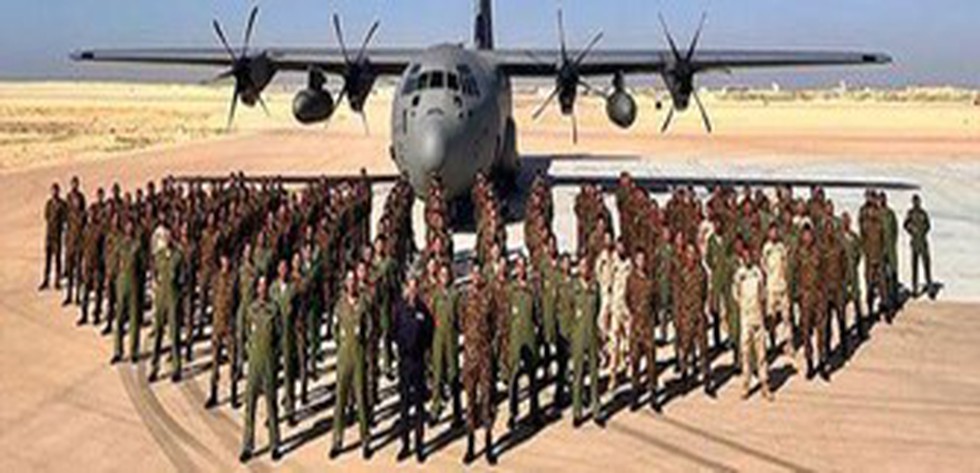
About Exercise KAZIND-2023:
- It is the 7th edition of Kazind exercise.
- The Joint Exercise between India and Kazakhstan was instituted as ‘Exercise PRABAL DOSTYK’ in the year 2016.
- After the second edition, the Exercise was upgraded to a company-level exercise and renamed as ‘Exercise KAZIND’.
- The Exercise has been further upgraded as a Bi-service Exercise this year by including the Air Force component.
- In this edition of the Exercise, both sides will practise conduct of Counter Terrorism operations in a sub-conventional environment under United Nations mandate.
- The contingents will jointly rehearse various tactical drills to include Raid, Search and Destroy Operations, Small Team Insertion and Extraction operations, etc.
- The scope of the Exercise also includes conduct of Counter Unmanned Aerial System Operations.
- Significance
- ‘It will provide an opportunity for both sides to gain insight into the tactics, battle drills, and procedures of each other, which is a prerequisite while operating under the ambit of the United Nations.
- The joint training will develop the necessary skills, resilience, and coordination to conduct joint military operations in Semi-Urban and Urban environments.
- Both sides will get a chance to practise drills on a wide spectrum of combat skills and mutually learn from each other.
- The exercise will provide an opportunity for the contingents to exchange views and share best practices.
Prelims Pointers
Oct. 30, 2023
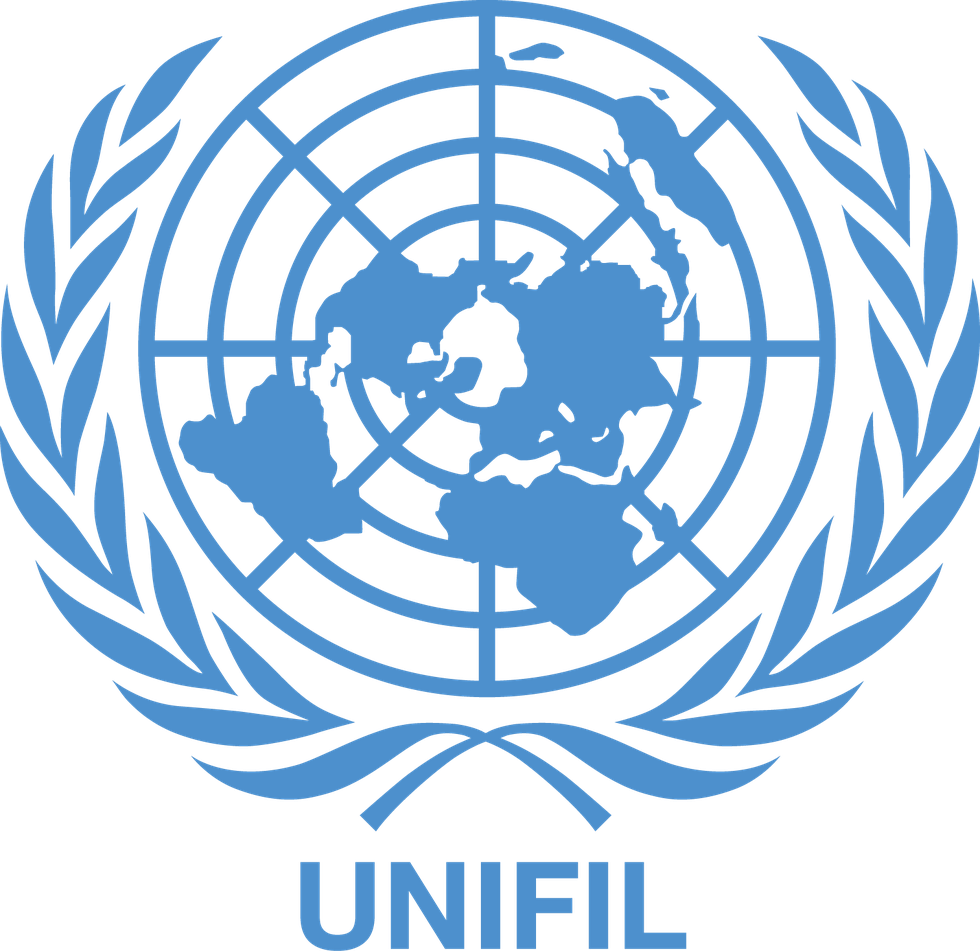
About United Nations Interim Force in Lebanon
- Originally, UNIFIL was created by the Security Council in March 1978 after Israel's invasion of Lebanon.
- Mandate: According to Security Council resolutions 425 (1978) and 426 (1978) of 19 March 1978, UNIFIL was established to:
- Confirm the withdrawal of Israeli forces from southern Lebanon.
- Restore international peace and security.
- Assist the Government of Lebanon in ensuring the return of its effective authority in the area.
- The mandate had to be adjusted twice, due to the developments in 1982 and 2000.
- It has around 10,500 peacekeepers coming from 48 troop contributing countries.
- The mission maintains an intensive level of operational and other activities amounting to approximately 14,500 activities per month, day and night, in the area of operations.
- Seventeen percent of activities are carried out jointly with the Lebanese Armed Forces. UNIFIL is complemented by a five-vessel Maritime Task Force.
- Funding: UNIFIL is funded through a separate account approved on an annual basis by the General Assembly
- It is a part of UN peacekeeping force.
About the UN Peacekeeping Force:
- UN peacekeepers provide security and political and peacebuilding support to help countries make the difficult, early transition from conflict to peace.
- Principles: UN Peacekeeping is guided by three basic principles:
- Consent of the parties;
- Impartiality;
- Non-use of force except in self-defence and defence of the mandate.
- The Security Council has a vital role in securing this commitment and cooperation while providing missions with realistic and clear mandates.
- There are currently 12 UN peacekeeping operations deployed.
- For its services, UN Peacekeeping has also received the Nobel Peace Prize.
Prelims Pointers
Oct. 30, 2023
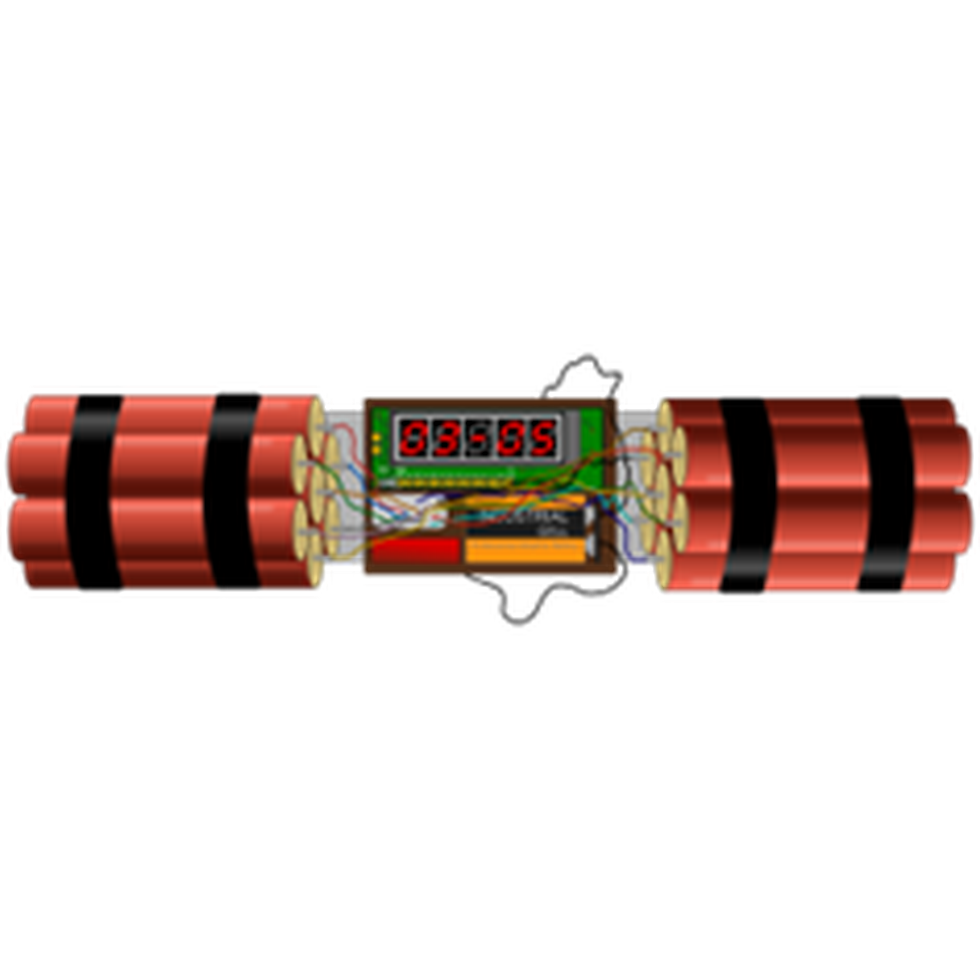
About Improvised Explosive Device (IED):
- An IED is a type of unconventional explosive weapon that can take any form and be activated in a variety of ways.
- IEDs are used by criminals, vandals, terrorists, suicide bombers, and insurgents.
- Because they are improvised, IEDs can come in many forms, ranging from a small pipe bomb to a sophisticated device capable of causing massive damage and loss of life.
- The extent of damage caused by an IED depends on its size, construction, and placement, and whether it incorporates a high explosive or propellant.
- The term IED came into common usage during the Iraq War that began in 2003.
- Elements of an IED:
- It consists of a variety of components that include an initiator, switch, main charge, power source, and container.
- IEDs may be surrounded by or packed with additional materials or “enhancements” such as nails, glass, or metal fragments designed to increase the amount of shrapnel propelled by the explosion.
- An IED can be initiated by a variety of methods, depending on the intended target.
- Materials used as explosives in IEDs:
- Many commonly available materials, such as fertiliser, gunpowder, and hydrogen peroxide, are used as explosive materials in IEDs.
- Explosives contain fuel and an oxidizer, which provides the oxygen needed to sustain the reaction.
Prelims Pointers
Oct. 30, 2023

About the Toll Operate Transfer (TOT) Model:
- In 2016, the Cabinet Committee on Economic Affairs (CCEA) authorised the National Highway Authority of India (NHAI) to monetise public-funded national highway projects and approved the ToT model.
- In the TOT model, public-funded projects, operational for two years, are put up for bidding, wherein the right of collection and appropriation of fees is assigned for a predetermined concession period (30 years) to concessionaires (developers or investors) against the upfront payment of a lump sum amount to NHAI.
- Such assignment of rights shall be based on the toll revenue potential of the identified NH projects.
- Operation & Maintenance (O&M) obligations of such projects shall be with the concessionaire till the completion of the concession period.
- The concessionaires for such projects shall be appointed through a transparent and uniform procurement process within the ambit of a pre-defined and approved implementation framework.
- It will help in the utilisation of the corpus (generated from proceeds of such project monetisation) by the Government to meet fund requirements for future development and O&M of highways in the country, including in unviable geographies.
- TOT model has been developed to encourage private participation in Highway sector.
Prelims Pointers
Oct. 30, 2023

About the Mahabali Tug:
- It is a 25-ton Bollard Pull (BP) Tug.
- This vessel, a creation of Shoft Shipyard located in Bharuch, Gujarat, is one of three such tugs commissioned as part of a collaborative effort between the Ministry of Defence and the Shipyard.
- It has been constructed in accordance with the classification rules set forth by the Indian Register of Shipping (IRS).
- It will assume a crucial role in aiding naval ships and submarines during berthing and unberthing operations, as well as in navigating through confined waters.
- It is equipped to enhance firefighting capabilities for ships both alongside and at anchorage.
- It is also outfitted for limited Search and Rescue Operations.
Key Facts about the Indian Register of Shipping (IRS):
- Indian Register of Shipping (IRS) is an international ship classification society providing ship classification and certification as well as technical inspection services.
- The not for profit entity was founded in 1975.
- It is a member of the International Association of Classification Societies (IACS), which represents classification societies worldwide.
- IRClass Systems and Solutions Ltd. (ISSPL) is an organisation promoted by the IRS and was set up in 2014.
- The two companies, IRS and ISSPL, form the brand IRCLASS, which provides survey, inspection, and certification services to the maritime and industrial sectors.
- IRCLASS is committed to promoting safe and environmentally friendly engineering practises through its services to the business community.
Prelims Pointers
Oct. 30, 2023
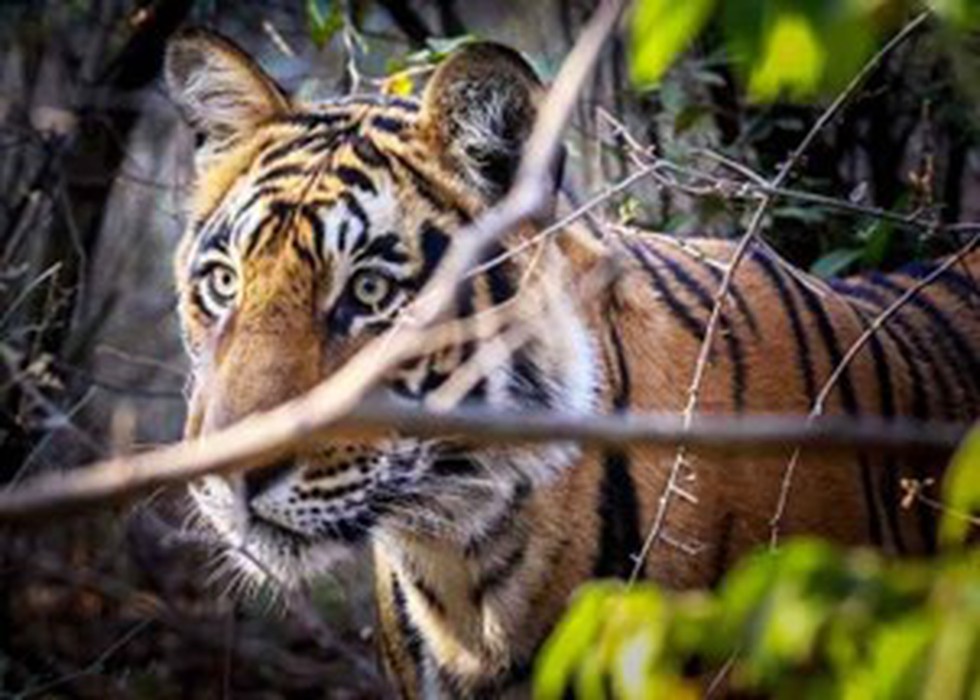
About Amangarh Tiger Reserve:
- Location:
- It is located in Amangarh, in Bijnor district, in the state of Uttar Pradesh.
- It is situated in the Terai region and covers an area of around 578 sq km.
- It shares its boundaries with Jim Corbett National Park of Uttarakhand.
- It was originally part of the Jim Corbett National Park, and after the state of Uttarakhand was carved out of Uttar Pradesh, Jim Corbett went to Uttarakhand, and Amangarh remained in Uttar Pradesh.
- It was declared a tiger reserve in 2012.
- Flora: The vegetation of the tiger reserve is a combination of grasslands, wetlands, and dense forest.
- Fauna:
- Mammals: Tiger, Elephant, Swamp Deer, Sambar, Cheetal, Hog Deer, Kakar, Langur, Sloth Bear, Porcupine, Otter.
- Birds: Hornbill, Red Jungle Fowl, Pea Fowl, Bengal Florican, Fishing Eagle, Serpent Eagle, Osprey, Woodpeckers, Shama, Indian Pitta, Paradise Flycatcher, Orioles, Emerald Dove.
- Reptiles: Monitor Lizard, Turtles, Python, Gangetic Dolphin, Mugger, Gharia etc.
Oct. 29, 2023
Prelims Pointers
Oct. 29, 2023
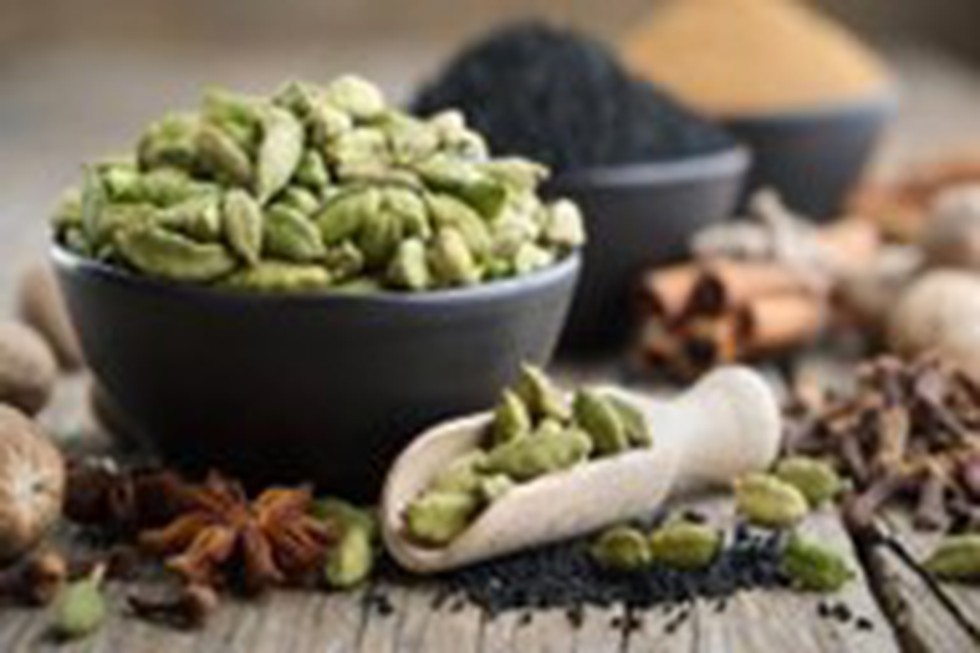
About Cardamom Cultivation:
- It is popularly known as Queen of Spices and belongs to the Zingiberaceae family.
- It is native to the evergreen, rainy forests of Western Ghats in South India.
- It is cultivated mainly in the Southern states, viz., Kerala, Karnataka, and Tamil Nadu.
- Soil and climate
- Soil: It is grown in forest loamy soils, which are usually acidic in nature with a pH range of 5.0–6.5.
- This crop can be grown at an elevation from 600 to 1500 m.
- Temperature: 10 to 35 degree C
- Rainfall: 1500 to 4000 mm
- The growth of cardamom is enhanced when planted in humus rich soils with low to medium available phosphorous and medium to high available potassium.
- It is used as a flavouring agent and drug in traditional medicine.
Prelims Pointers
Oct. 29, 2023
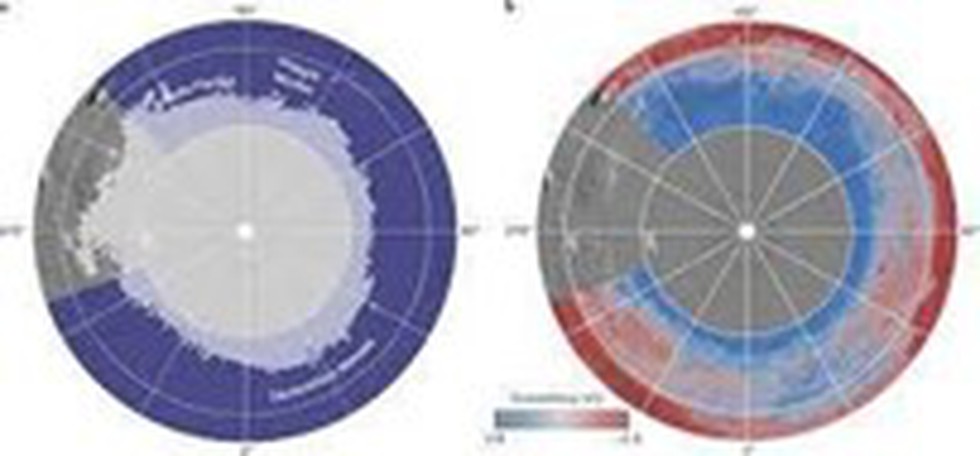
About the Subsurface Water Ice Mapping (SWIM) project:
- It aims to locate the best places to access water ice buried under the Martian surface.
- The recently released fourth set of maps is the most detailed and accurate since the project started in 2017.
- It is led by the Planetary Science Institute in Tucson, Arizona, and managed by NASA’s Jet Propulsion Laboratory in Southern California.
- The project uses data from several NASA missions, such as the Mars Reconnaissance Orbiter (MRO), the 2001 Mars Odyssey, and the defunct Mars Global Surveyor.
- SWIM used two higher-resolution cameras on MRO.
- The Context Camera data was used to improve the maps of the Northern Hemisphere.
- For the first time, the HiRISE (High-Resolution Imaging Science Experiment) data was used to provide the most detailed view of the ice’s edge as close to the equator as possible.
- The first phase of the SWIM project, completed in 2019, focused on the northern hemisphere. The second phase, completed in 2020, includes the southern hemisphere.
- Highlights of the new map
- The new map includes sightings of so-called “polygon terrain,” where the seasonal expansion and contraction of subsurface ice causes the ground to form polygonal cracks, indicating more ice hidden beneath the surface.
Prelims Pointers
Oct. 29, 2023

About Ejecta Halo:
- The Vikram lander of the Chandrayaan-3 mission landed near the south pole of the moon.
- During the action of descent stage thrusters and the consequent landing, a significant amount of lunar surficial epi regolith material got ejected, resulting in a reflectance anomaly or ejecta halo”,
- Scientists from Indian Space Research Organisation estimate that about 2.06 tonnes of lunar epi regolith were ejected and displaced over an area of 108.4 m² around the landing site
- Ejecta halo is an irregular, bright patch surrounding the lander.
- Significance:
- This discovery sheds light on the behaviour of lunar materials during such events.
- It opens up new avenues for research and understanding lunar geology.
What is Regolith?
- It is a blanket of unconsolidated, loose, heterogeneous superficial deposits covering solid rock.
- Epiregolith is lunar rocks and soil, or regolith, or Moon dust.
Prelims Pointers
Oct. 29, 2023
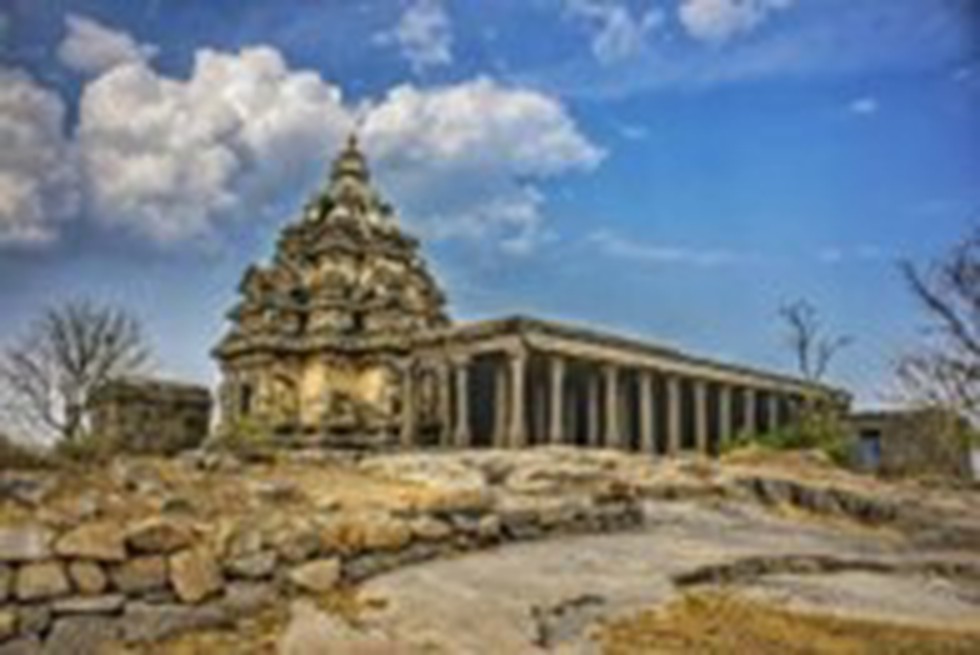
About Talagirishwara Temple:
- It is located in Panamalai village of Viluppuram district in Tamil Nadu, India.
- The temple is constructed on an insignificant, small hill overlooking the Panamalai Lake.
- The temple was constructed by Pallava king Narasimhavarman II, popularly known as Rajasimha.
- Features
- This Seventh Century structure incorporates a Vimana that resembles that of Kailasanatha temple in Kanchipuram.
- The garbhagriha stocks a Dharalingam, and as in Pallava temples of that period, there is a Somaskanda section on hindmost wall of the shrine.
- It includes an Ardhamandapam (partial Mandapam).
- The walls of the Ardhamandapam post panels of divinities, including Brahma with Saraswati and Vishnu with Lakshmi on either flank.
- The temple faces east and the garbhagriha is enclosed on all three sides by sub shrines Some more sub shrines and a Mahamandapam (a massive Mandapam) have been added in the later period to the structure.
- The Vimana is 3 layered and the high tier has also been rebuilt.
- The typical Pallava mark, pillars with crouching lions, is also found.
- Paintings in the temple
- The paintings in this temple bear a close resemblance to the paintings in Ajantha and Chithannavasal.
- The paintings are on the wall of a sub-temple on the northern side of the Talagirishwara (Siva) temple.
- There is a painting of Lord Shiva with eight hands dancing known as Latathilagabhani, being watched by Goddess Parvathi with her crown and well decorated umbrella.
- These paintings were older than Chithannavasal paintings.
- These paintings were created after covering the stonewalls with paste made of limestone and sand.
Prelims Pointers
Oct. 29, 2023
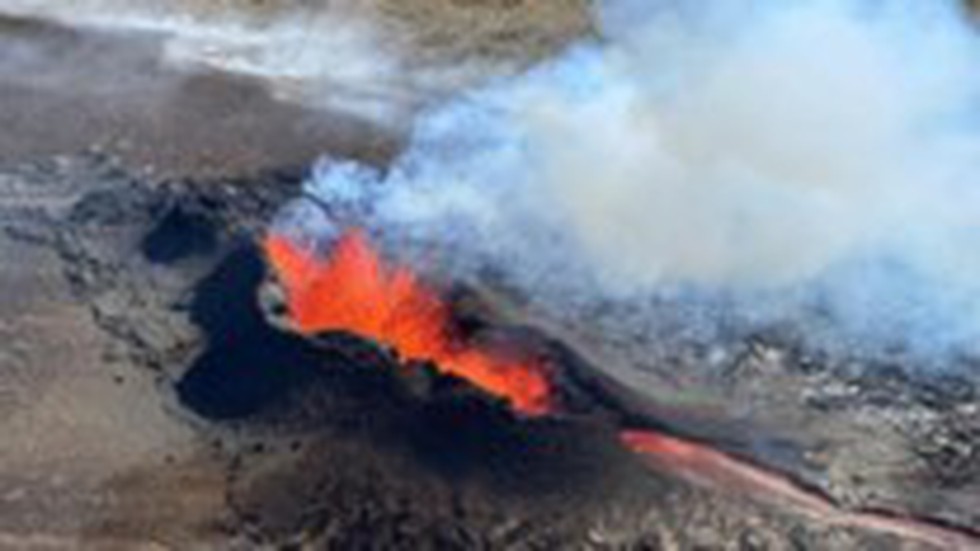
About Earthquake swarm
- It is a series of many (sometimes thousands) low-intensity earthquakes without a discernible main shock that can occur over weeks in active geothermal areas.
- When seismic energy piles up inside the Earth and is released in small amounts from certain points, a series of earthquakes can occur.
What causes swarm sequences?
- Fluid movement:
- In volcanic environments, this can be fluid released from deeper magma or circulating within active geothermal areas (in volcanic areas such as the Taupō Volcanic Zone).
- The earthquakes triggered by fluids occur as fault slip on the cracks and faults through which the water is moving.
- Active volcanism:
- Magma movement can also act as the ‘driving mechanism’ for swarms, creating earthquakess as magma-filled cracks push their way through the Earth’s crust.
- In such a case, earthquakes commonly occur near the crack tip (ahead of the magma where the crack is starting to open) or off to the side of the crack.
- Slow-slip events
- A slow-slip event is essentially an earthquake in slow-motion, and typically involves centimetres to tens of centimetres of movement along a fault, over weeks to years.
- We commonly see slow slip events at the Hikurangi subduction zone, usually at least one or two per year.
Key facts about Reykjanes peninsula
- It is a peninsula in South West Iceland, characterized by immense lava fields, volcanoes, and heightened geothermal activity.
- It runs along the Mid-Atlantic Rift, where the Eurasian and the North American tectonic plates are drifting apart.
Prelims Pointers
Oct. 29, 2023

About NASA-ISRO Synthetic Aperture Radar (NISAR):
- NISAR is a Low Earth Orbit (LEO) observatory jointly developed by NASA and ISRO.
- It is an SUV-size satellite weighing 2,800 kilograms.
- It consists of both L-band and S-band synthetic aperture radar (SAR) instruments, which makes it a dual-frequency imaging radar satellite.
- NISAR will be the first satellite mission to use two different radar frequencies (L-band and S-band) to measure changes in our planet's surface.
- SAR is capable of penetrating clouds and can collect data day and night regardless of the weather conditions.
- NASA has provided the L-band radar, GPS, a high-capacity solid-state recorder to store data, and a payload data subsystem. ISRO has provided the S-band radar, the GSLV launch system, and spacecraft.
- It also consists of a large 39-foot stationary antenna reflector made of a gold-plated wire mesh which will be used to focus “the radar signals emitted and received by the upward-facing feed on the instrument structure.
- Mission Objectives:
- It will measure Earth’s changing ecosystems, dynamic surfaces, and ice masses, providing information about biomass, natural hazards, sea level rise, and groundwater.
- NISAR will observe Earth’s land and ice-covered surfaces globally with 12-day regularity on ascending and descending passes.
Prelims Pointers
Oct. 29, 2023
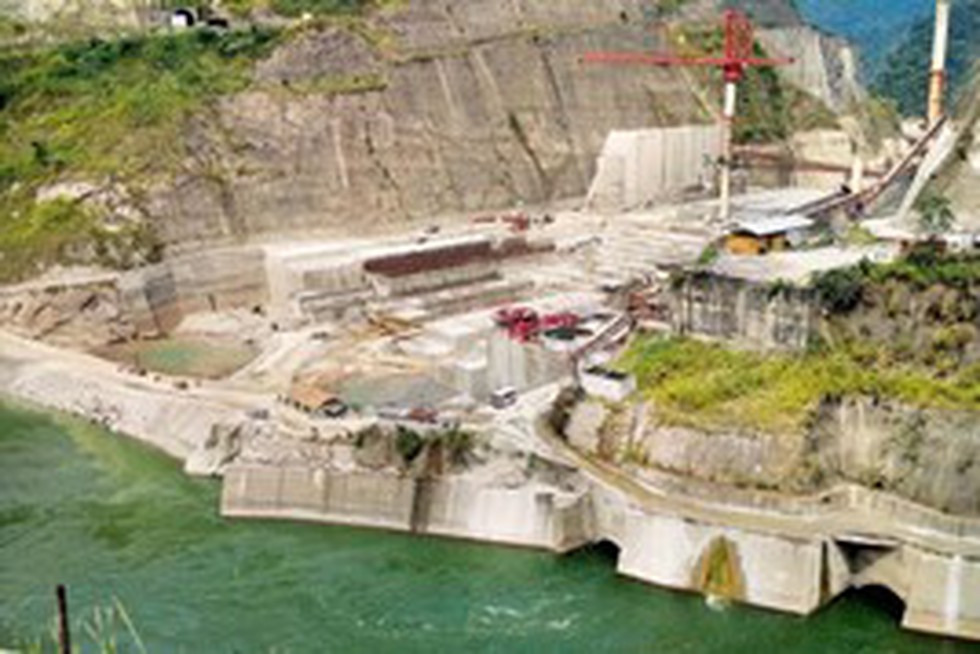
About the Lower Subansiri Hydroelectric Power Project:
- It is the biggest hydroelectric project undertaken in India so far.
- It is a run-of-river scheme on the river Subansiri.
- Location: The Project is located near North Lakhimpur on the border of Arunachal Pradesh and Assam.
- Capacity: 2000MW
- It will generate up to 7.4 billion kWh of electricity annually.
- The project includes the construction of a surface powerhouse and a concrete gravity dam that is 116m-high from the river bed level.
- The length of the dam will be 284m.
- The dam is located in the Dhemaji district of Assam, while the powerhouse is located in the Subansiri district of Arunachal Pradesh.
- It is being developed by the state-run National Hydro Power Corporation (NHPC).
- Funding:
- The project cost was met through 70% equity and 30% debt financing through the provision of a term loan.
- The central government is providing budgetary support as part of the equity component.
Key facts about the Subansiri River:
- Subansiri River, better known as the "Gold River,r" is the largest tributary of the Brahmaputra River.
- It flows through Assam, Arunachal Pradesh, and the Tibet Autonomous Region of China.
- Course:
- Originating from the Himalaya Mountains, it flows towards the east and south-east portions of Arunachal Pradesh and then flows to Assam Valley.
- Finally, it joins the Brahmaputra River in Lakhimpur district, Assam.
- It joins the Brahmaputra at the mystic confluence of Majuli Island, which is noted as the largest inhabited river island in the world.
- Total Length: 442 kilometres
Prelims Pointers
Oct. 29, 2023

About Neanderthals:
- They are the closest known human relatives and interbred with Homo sapiens.
- Species: Homo neanderthalensis
- They lived throughout Europe and parts of Asia from about 400,000 until about 40,000 years ago.
- Current evidence from both fossils and DNA suggests that Neanderthal and modern human lineages separated at least 500,000 years ago.
- Neanderthals co-existed with modern humans for long periods of time before eventually becoming extinct.
- Although they are long extinct, their genes are still present in modern human DNA.
- Features:
- Some defining features of their skulls include the large middle part of the face, angled cheek bones, and a huge nose for humidifying and warming cold, dry air.
- Their bodies were shorter and stockier than modern humans, another adaptation to living in cold environments.
- But their brains were just as large as modern humans and often larger - proportional to their brawnier bodies.
- Their bones reveal that they were extremely muscular and strong, but led hard lives, suffering frequent injuries.
- Neanderthals made and used a diverse set of sophisticated tools, controlled fire, lived in shelters, made and wore clothing, were skilled hunters of large animals and also ate plant foods, and occasionally made symbolic or ornamental objects.
- There is evidence that Neanderthals deliberately buried their dead and occasionally even marked their graves with offerings, such as flowers.
Prelims Pointers
Oct. 29, 2023
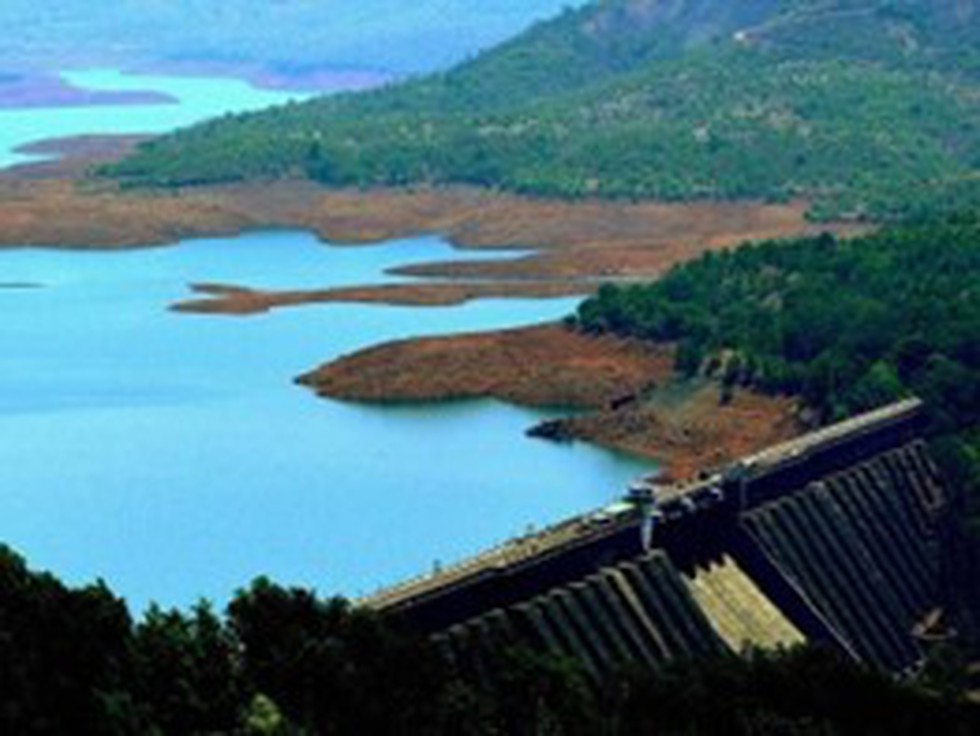
About Koyna Dam:
- Location: It is one of the largest dams in the state of Maharashtra and is located at Koyna Nagar in Satara district.
- It is a rubble-concrete dam constructed on the Koyna River.
- The construction of this dam was completed in 1963 and is among the chief civil engineering projects built after the independence of India.
- The main purpose of dam is hydroelectricity, with some irrigation in neighbouring areas.
- Koyna Hydroelectric Project is the largest completed hydroelectric power plant in India, with a total installed capacity of 1,920 MW.
- The catchment area of the Koyna Dam blocks up the Koyna River and creates the Shivsagar Lake, which is roughly 50 km long.
- The dam plays a vital role in flood control during monsoon season.
Key Facts about the Koyna River:
- It is a tributary of the Krishna River in the western part of Maharashtra.
- Origin: It rises near Mahabaleshwar, a famous hill station in the Western Ghats.
- The river is just 100 metres wide and flows slowly.
- Unlike most of the other rivers in Maharashtra, which flow East-West direction, the Koyna River flows in North-South direction.
- The river merges with the Krishna River at Karad in the Satara districtof Maharashtra.
- Due to its electricity-generating potential through the Koyna Hydroelectric Project, Koyna River is known as the Life Line of Maharashtra.
Prelims Pointers
Oct. 29, 2023
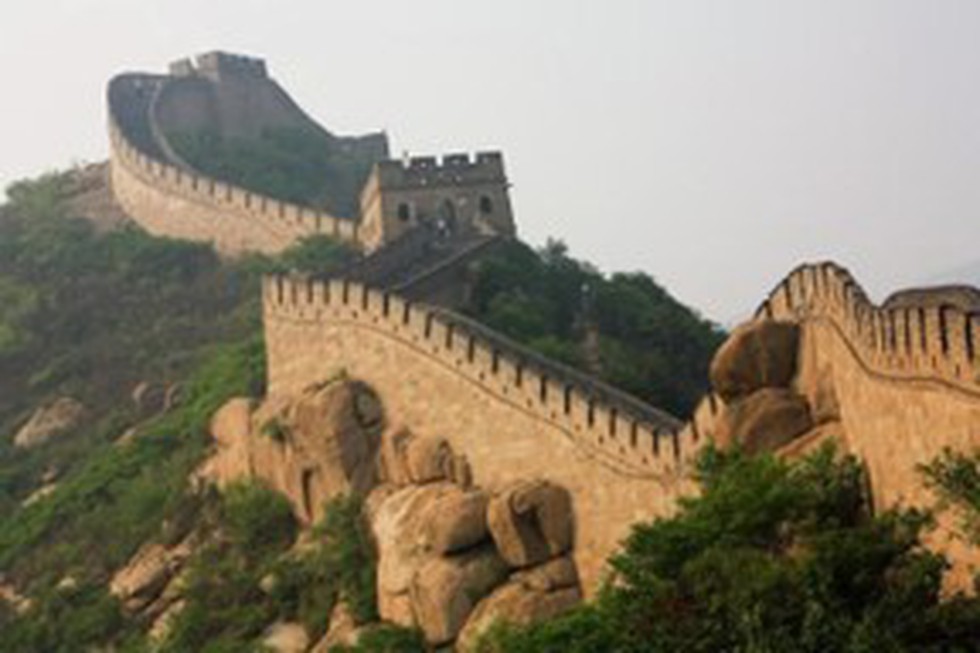
About the Ming Dynasty:
- The Ming Dynasty ruled China from A.D. 1368 to 1644.
- Known for its trade expansion to the outside world that established cultural ties with the West, the Ming Dynasty is also remembered for its drama, literature, and world-renowned porcelain.
- The Ming dynasty, which succeeded the Yuan (Mongol) dynasty (1206–1368), was founded by a commoner, Zhu Yuanzhang (1328–1398), who established Nanjing as his capital.
- However, nearly fifty years later, the third Ming emperor relocated the capital to Beijing, which has remained China’s main seat of government ever since.
- Governmental Structure:
- The basic governmental structure established by the Ming was continued by the subsequent Qing (Manchu) dynasty and lasted until the imperial institution was abolished in 1911/12.
- The civil service system was perfected during the Ming and then became stratified; almost all the top Ming officials entered the bureaucracy by passing a government examination.
- Affairs in each province were handled by three agencies, each reporting to separate bureaus in the central government.
- The position of prime minister was abolished. Instead, the emperor took over personal control of the government, ruling with the assistance of the especially appointed Neige, or Grand Secretariat.
- Achievements:
- The period witnessed unprecedented economic and cultural expansion and the near doubling of China’s population.
- Notable Ming achievements include the refurbishment of the Great Wall to its greatest glory, large naval expeditions, vibrant maritime trade, and the rise of a heavily monetized economy.
- Vital cultural achievements included the production of exceptional—and often colorful—porcelains, paintings, lacquers, and textiles.
- The Ming Dynasty saw a publishing boom in China, with an avalanche of affordable books being produced for commoners.
- Collapse:
- The last century of the Ming, however, was besieged by border troubles, crop failure, fiscal instability, and court corruption, leading to an overthrow by Manchu invaders from the north, who took Beijing in 1644.
- The Ming were succeeded by the Qing (Manchu) dynasty (1644-1911).
Prelims Pointers
Oct. 29, 2023

मिंग राजवंश के बारे में:
- मिंग राजवंश ने 1368 ई. से 1644 ई. तक चीन पर शासन किया।
- बाहरी दुनिया में अपने व्यापार विस्तार और पश्चिम के साथ सांस्कृतिक संबंध स्थापित करने के लिए जाना जाने वाला मिंग राजवंश अपने नाटक, साहित्य और विश्व-प्रसिद्ध चीनी मिट्टी के बरतन के लिए भी याद किया जाता है।
- मिंग राजवंश, जो युआन (मंगोल) राजवंश (1206-1368) के बाद आया, की स्थापना एक सामान्य व्यक्ति, झू युआनज़ैंग (1328-1398) ने की थी, जिसने नानजिंग को अपनी राजधानी के रूप में स्थापित किया था।
- हालाँकि, लगभग पचास साल बाद, तीसरे मिंग सम्राट ने राजधानी को बीजिंग में स्थानांतरित कर दिया, जो तब से चीन की सरकार की मुख्य सीट बनी हुई है।
- सरकारी संरचना:
- मिंग द्वारा स्थापित बुनियादी सरकारी संरचना को बाद के किंग (मांचू) राजवंश द्वारा जारी रखा गया और 1911/12 में शाही संस्था को समाप्त होने तक जारी रखा गया।
- मिंग के दौरान सिविल सेवा प्रणाली को पूर्ण बनाया गया और फिर स्तरीकृत किया गया; लगभग सभी शीर्ष मिंग अधिकारियों ने सरकारी परीक्षा उत्तीर्ण करके नौकरशाही में प्रवेश किया।
- प्रत्येक प्रांत में मामलों को तीन एजेंसियों द्वारा संभाला जाता था, प्रत्येक केंद्र सरकार में अलग-अलग ब्यूरो को रिपोर्ट करती थी।
- प्रधानमंत्री का पद समाप्त कर दिया गया। इसके बजाय, सम्राट ने विशेष रूप से नियुक्त नीगे या ग्रैंड सेक्रेटेरिएट की सहायता से शासन करते हुए, सरकार का व्यक्तिगत नियंत्रण अपने हाथ में ले लिया।
-
उपलब्धियाँ:
- इस अवधि में अभूतपूर्व आर्थिक और सांस्कृतिक विस्तार और चीन की जनसंख्या लगभग दोगुनी हो गई।
- उल्लेखनीय मिंग उपलब्धियों में महान दीवार का उसके सबसे बड़े गौरव के रूप में नवीनीकरण, बड़े नौसैनिक अभियान, जीवंत समुद्री व्यापार और भारी मुद्रीकृत अर्थव्यवस्था का उदय शामिल है।
- महत्वपूर्ण सांस्कृतिक उपलब्धियों में असाधारण-और अक्सर रंगीन-चीनी मिट्टी के बर्तन, पेंटिंग, लाख और वस्त्रों का उत्पादन शामिल था।
- मिंग राजवंश ने चीन में प्रकाशन में तेजी देखी, आम लोगों के लिए सस्ती किताबें तैयार की गईं।
-
पतनावस्था :
- हालाँकि, मिंग की पिछली सदी सीमा संबंधी समस्याओं, फसल की विफलता, राजकोषीय अस्थिरता और अदालती भ्रष्टाचार से घिरी हुई थी, जिसके कारण उत्तर से मांचू आक्रमणकारियों ने परास्त किया, जिन्होंने 1644 में बीजिंग पर कब्जा कर लिया।
- मिंग के बाद किंग (मांचू) राजवंश (1644-1911) आया।
Oct. 28, 2023
Prelims Pointers
Oct. 28, 2023
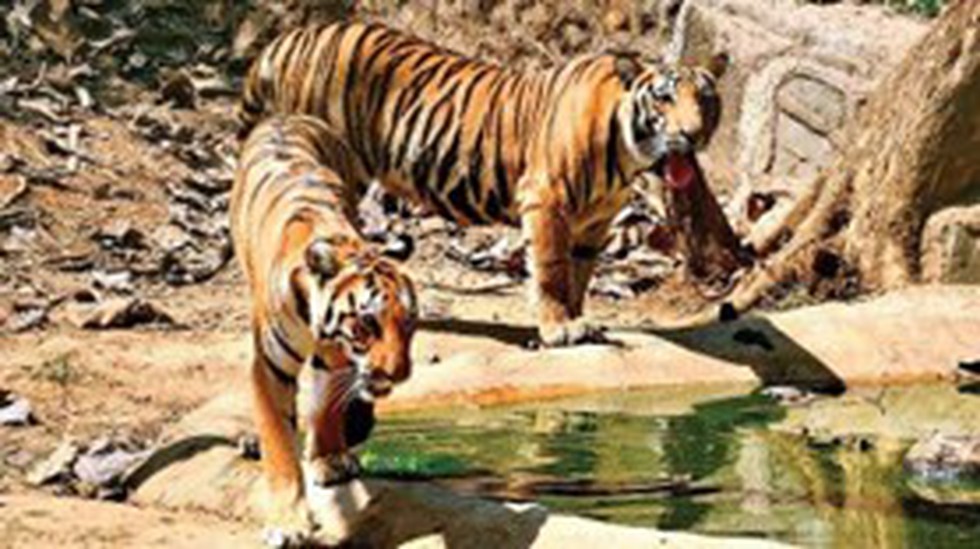
About Melghat Tiger Reserve (MTR):
- Location:
- It is located in the Amaravati district of Maharashtra.
- It is located on the southern offshoot of the Satpura Hill Range in Central India, called Gavilgarh Hill.
- It was established as a wildlife sanctuary in 1967 and was declared a tiger reserve in 1974.
- It was the first tiger reserve in Maharashtra.
- It was among the first nine tiger reserves notified in 1973-74 under Project Tiger.
- The name 'Melghat' means the confluence of various 'ghats' or valleys, as is typical from the landscape of this tiger Reserve.
- Vegetation: The forest is tropical dry deciduous in nature, dominated by teak.
- Rivers: The reserve is a catchment area for five major rivers: the Khandu, Khapra, Sipna, Gadga, and Dolar, all are tributaries of the river Tapti.
- The Tapti River and the Gawilgadh ridge of the Satpura Range form the boundaries of the reserve.
- Tribes: The Korkus are the largest tribal community in Melghat. Other communities include the Gawli community, the Gond tribe, and several other smaller tribal communities.
- Flora: Some of the common species are teak, Lagerstroemia Parviflora, Terminalia Tomentosa, Ougeinia Oojeinensis, Emblica Officinalis, Bamboo, etc.
- Fauna:
- Apart from Tigers the other prominent animals are Sloth Bear, Indian Gaur, Sambar deer, Leopard, Nilgais, dhole, hyena, jungle cat, langur, etc.
- It is considered a stronghold of the critically endangered forest owlet.
Prelims Pointers
Oct. 28, 2023

About the Tiangong Space Station:
- Tiangong (Chinese for "Heavenly Palace") is a modular space station being constructed by the China National Space Administration (CNSA).
- It is the first space station built by China.
- Tiangong is currently in low Earth orbit (LEO), and it is expected to be operational until 2028.
- It is a three-module space station. The core module, Tianhe, launched in April 2021, followed by the Wentian and Mengtian experiment modules in 2022.
- Tiangong is significantly smaller and lighter than the International Space Station (ISS), with only three modules compared to the ISS's 16 modules.
- It can accommodate up to three astronautsat a time for six-month stays. It can also support six astronauts at a time during crew handovers.
- The station will have its own power, propulsion, life support systems, and living quarters.
- The new space station is planned to share its orbit with the Xuntian space telescope to allow astronauts to easily repair and upgrade the telescope.
- China is only the third country to have put both astronauts into space and build a space station, after the Soviet Union (now Russia) and the US.
Why does China have its own space station?
- China is excluded from the ISS programme, largely due to U.S. concerns over the Chinese space programs' links with the People's Liberation Army.
- In 2011, the US Congress prohibited NASA from cooperating substantially with its Chinese counterpart without express prior authorization.
- This law, known as the Wolf Amendment, makes it very difficult for China to participate in the ISS programme, if the nation even wishes to do so.
Prelims Pointers
Oct. 28, 2023

About the Transfer of Property Act, 1882:
- The TPA is an important piece of legislation that governs the transfer of property between living beings (inter vivos) in India.
- The TPA primarily applies to a transfer of immovable property; however, some sections and clauses of this Act deal with a transfer of movable property as well.
- This Act was first introduced in 1882 and has undergone several amendments since then.
- It outlines the various modes of required transfer and the legal requirements to ensure the transfer is valid.
- The Act applies to all citizens of India who are involved in the transfer.
- What is the Transfer of Property?
- According to the law, the transfer of property is defined as the act of a living person transferring property to one or more living persons, either presently or in the future.
- This definition also encompasses companies, associations, or groups of individuals.
- What Does ‘Transfer’ Mean Under the TPA?
- The TPA considers the term "transfer" to include various modes such as sale, mortgage, lease, actionable claim, gift, or exchange.
- However, it does not apply to transfers that occur through the operation of law, such as inheritance, forfeiture, insolvency, or sale through a decree's execution.
- Additionally, the Act does not govern property disposal through wills or cases related to the succession of the property.
- Other Important Provisions:
- Capacity to Transfer: The Act specifies that only those who can lawfully transfer property can do so. Those who have attained legal adulthood, possess full mental capacity, and are not legally prohibited from transferring property are considered "competent, competent, and eligible individuals" under the law.
- Delivery of Possession: The Act requires that property transfers include possession delivery. It means the transferor must give the transferee physical possession of the property. This requirement is essential for the validity of the transfer and must be met for the transfer to be legally recognised.
- Registration of Document: The Act requires that the transfer of property be documented and registered with the appropriate authorities. It ensures that the transfer is legally binding and that the rights of both parties are protected.
- Performance of Contract: Under the Act, the transferor is legally obligated to meet all sales agreement terms. It includes passing over custody of the items, paying any payments due, and providing any required paperwork. A breach of contract will result in possible legal action if this is not done.
- The rule against perpetuity: Property must be transferred during the lifetime of an individual, as the perpetuity rule cannot be A property cannot be transferred to an unborn child, and it is necessary to consider that while transferring the interest of the property, the person should be above the age of 18 years.
- For property transfer, the property should be ‘transferrable’. Some properties, like the right to sue, the right to future maintenance, stipends to the air force/navy/political prisoners/civil pensioners, and the chance of an heir-apparent to succeed to an estate, are not transferrable.
Prelims Pointers
Oct. 28, 2023
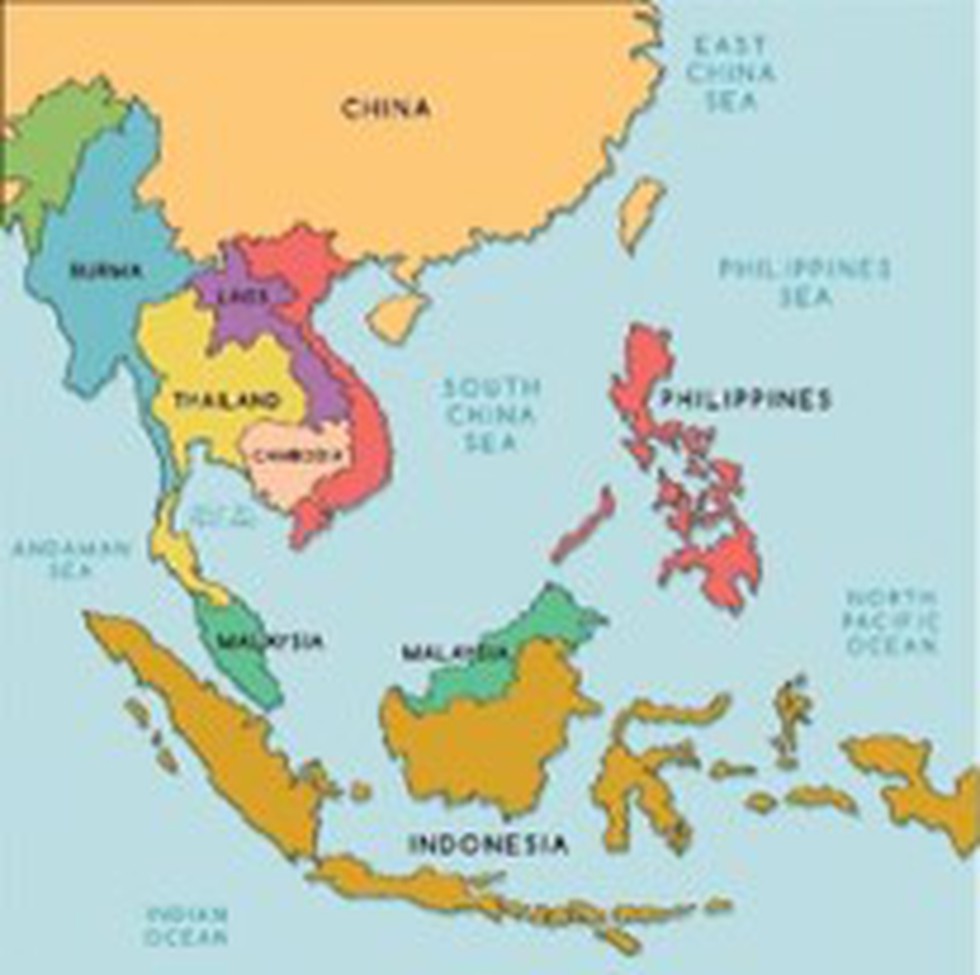
About the East China Sea:
- It is an arm of the Western Pacific Ocean, located in East Asia.
- It covers an area of roughly 1,249,000 square kilometers (482,000 sq mi).
- It is situated between the eastern coast of China, including the Shanghai coast, and the southwestern coast of Japan, including the Ryukyu Islands.
- The Korean peninsula, China, Japan, and Taiwan lie within or border the East China Sea.
- The East China Sea and the South China Sea together form the China Sea.
- It connects with the Japan Sea via the Tsushima Strait and the South China Sea via the Taiwan Strait.
- Its northern extension between mainland China and the Korean Peninsula is the Yellow Sea.
- It is largely a shallow sea. The western edge of the sea is a continuation of the shelf that extends between the South China Sea and the Yellow Sea.
- Rivers: The Yellow River (Huanghe) and the Yangtze River (Changjiang) discharge into the East China Sea, providing much fresh water and suspended particles.
- Weather is dominated by the monsoon wind system, the result of differential heating between land and water.
- Islands: The sea contains several islands, with the most significant being the Ryukyu Islands, which are part of Japan, and the Diaoyu Islands (known as the Senkaku Islands in Japan), which are a source of territorial dispute between China and Japan.
Prelims Pointers
Oct. 28, 2023
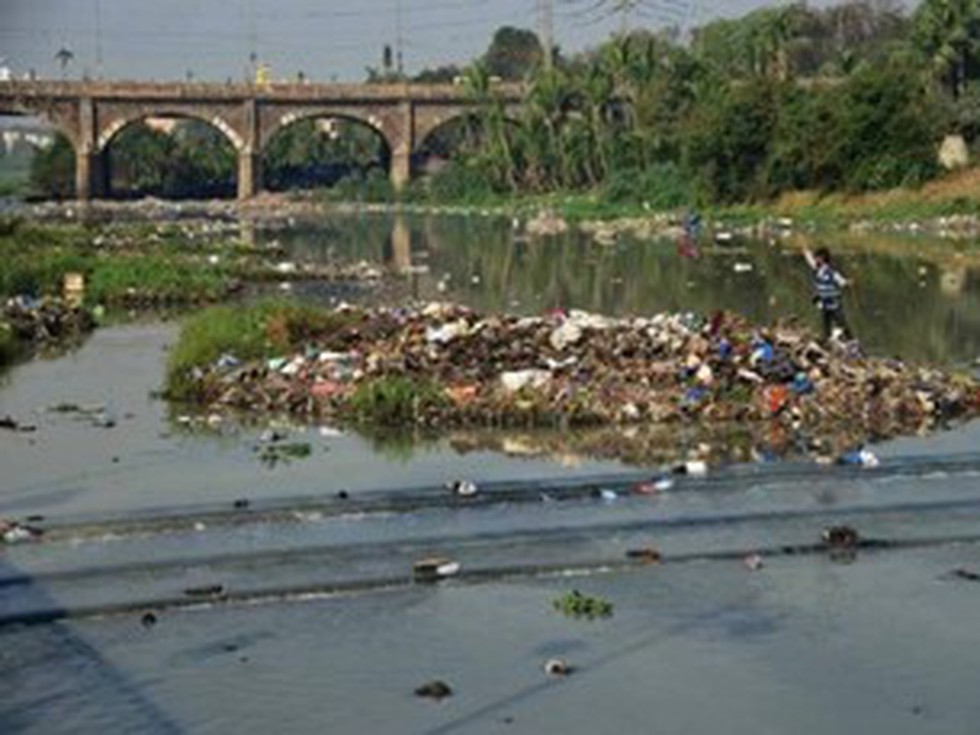
About the Musi River:
- It is a river that flows through the southern Indian state of Telangana.
- It is a tributary of the Krishna River on the Deccan Plateau.
- It was known as the Muchukunda River in earlier days.
- Hyderabad stands on the bank of this river, which divides the city between the old and the new.
- Course:
- It begins in the Anantagiri Hills near Vicarabad, Rangareddi district, 90 kilometress to the west of Hyderabad.
- It joins the Krishna River near Wazirabad in Nalgonda district after covering a distance of about 240 km.
- Dams: Himayat Sagar and Osman Sagar are the two dams that are constructed over the river.
- Bridges:
- The River is crossed by several historical bridges, including the Purana Pul (Old Bridge), which was built during the reign of the Nizams of Hyderabad.
- The other bridges are located in Dabirpura, Amberpet Chaderghat and Uppal Kalan.
- On 28 September 1908, Musi River was the reason for the devastating floods in Hyderabad.
- Due to random urbanization and a lack of planning, the river has become a holder of all the unprocessed domestic and industrial waste drained out of Hyderabad.
Prelims Pointers
Oct. 28, 2023

About Leopard Toby Puffer Fish:
- It is a deepwater reef species that lives in deep water caves and reef slopes at an average depth of 50 to 100 meters.
- Scientific name: Canthigaster leoparda
- Appearance: It is characterised by clusters of black dots along the flanks of its pale body.
- It is also known as blowfish.
- Habitat: It is believed to have a thriving population in its deep-sea habitat.
- Puffer fish in general are known for their unique morphological appearance and features, especially their defensive mechanism of inflating and deflating.
- These small sea creatures pump water into their stomachs until they turn into the shape of a ball, larger than their normal body size, to evade predators.
- Distribution: It is usually found in the waters of the Philippines, Indonesia, Guam, and Micronesia.
- Conservation status
- IUCN: Least Concern
Prelims Pointers
Oct. 28, 2023

About Satellite internet technology:
- Satellite Internet works similarly to satellite TV.
- It begins with an internet service provider sending satellites into space to orbit around the earth.
- That ISP then relies on a signal routed through one of those satellites in low- or high-Earth orbit and a receiver dish that picks up that signal.
- The receiver is typically placed on your home or business in a spot with as much unobstructed access to the sky as possible.
- You'll connect a modem to that dish to translate the incoming signal into a workable internet connection.
- The more common method of delivering high-speed satellite internet usually involves constellations of low-Earth orbit (LEO) satellites.
- LEO satellites orbit at a height of between 250 and 2,000 kilometres above the planet.
- The satellite that orbits the Earth communicates using radio waves.
- Advantages
- The most ideal internet access is for users who live in rural areas or live far away from cities or cable or phone offices.
- It uses satellite dish for the two-way communication and does not need telephone cables or lines.
- Compared to other internet options, there are fewer or negligible network outages in case of satellite internet.
Prelims Pointers
Oct. 28, 2023
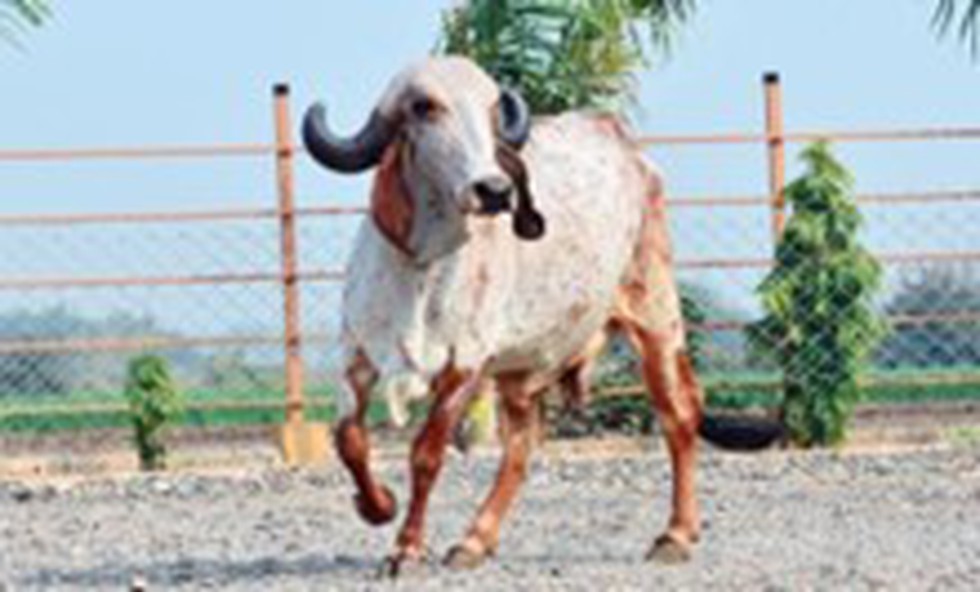
About the Rashtriya Gokul Mission
- It has been implemented for the development and conservation of indigenous bovine breeds since December 2014.
- It is continued under the umbrella scheme Rashtriya Pashudhan Vikas Yojana from 2021 to 2026.
- Objectives
- To enhance the productivity of bovines and increase milk production in a sustainable manner using advanced technologies.
- To propagate the use of high genetic merit bulls for breeding purposes.
- To enhance artificial insemination coverage through strengthening the breeding network and delivery of Artificial insemination services at farmers' doorstep.
- To promote indigenous cattle & buffalo rearing and conservation in a scientific and holistic manner.
About Gir Cow:
- It is an excellent dairy cattle breed well-known among milk producers.
- It is known for its milk producing ability, good fertility, heat tolerance, easy maintenance, resistance to diseases, and longevity.
- The name of the breed is derived from its place of origin, the “Gir” forest of Gujarat.
- It has the ability to adapt to the entire central belt and northern and southern stretches.
Prelims Pointers
Oct. 28, 2023
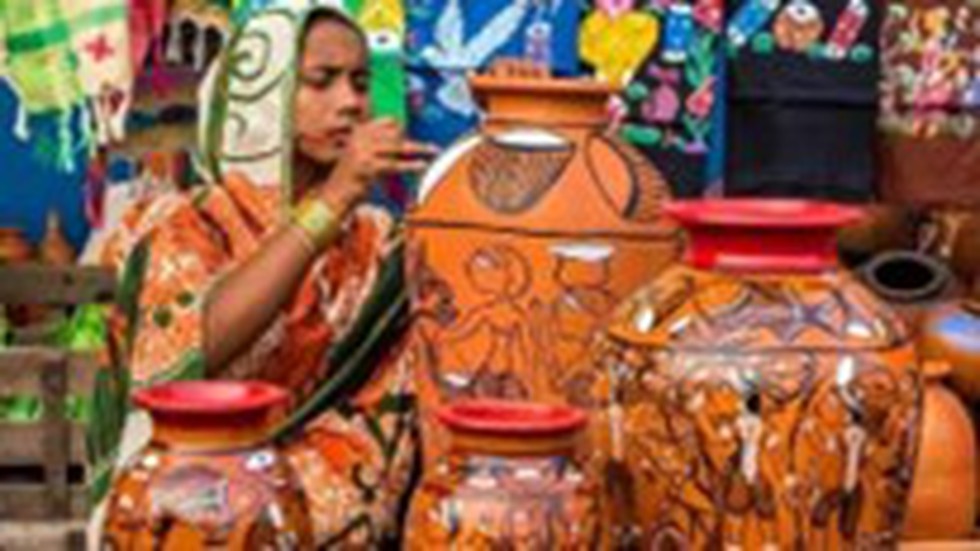
About Saras Aajeevika Mela:
- It is an initiative by the Deendayal Antyodaya Yojana-National Rural Livelihoods Mission (DAY-NRLM) of Ministry of Rural Development.
- Aim: To bring the rural women Self Help Group members under one platform to showcase their skills, sell their products, and help them build linkages with potential market players.
- It is organised by the Ministry of Rural Development and National Institute of Rural Development and Panchayati Raj (NIRDPR)
Key facts about DAY-NRLM
- It is a flagship rural poverty alleviation program of the Government of India.
- It addresses multiple dimensions of The programme aims to reach out to 10 Crore rural poor households and organise one woman member from each rural household into affinity-based women SHGs.
- These SHGs provide close, long-term handholding support to their members, enabling them to access financial services from banks, diversify and stabilise their livelihoods, and effectively access their entitlements with ease.
- Objective: To ensure that each family is able to achieve household food security and have more than one stabilised livelihood source.
- The Mission seeks to achieve its objective through investing in four core components, viz.,
- Social mobilisation, promotion, and strengthening of self-managed and financially sustainable community institutions for the rural poor.
- Financial inclusion of the rural poor
- Sustainable livelihoods; and
- Social inclusion, social development, and convergence
Prelims Pointers
Oct. 28, 2023
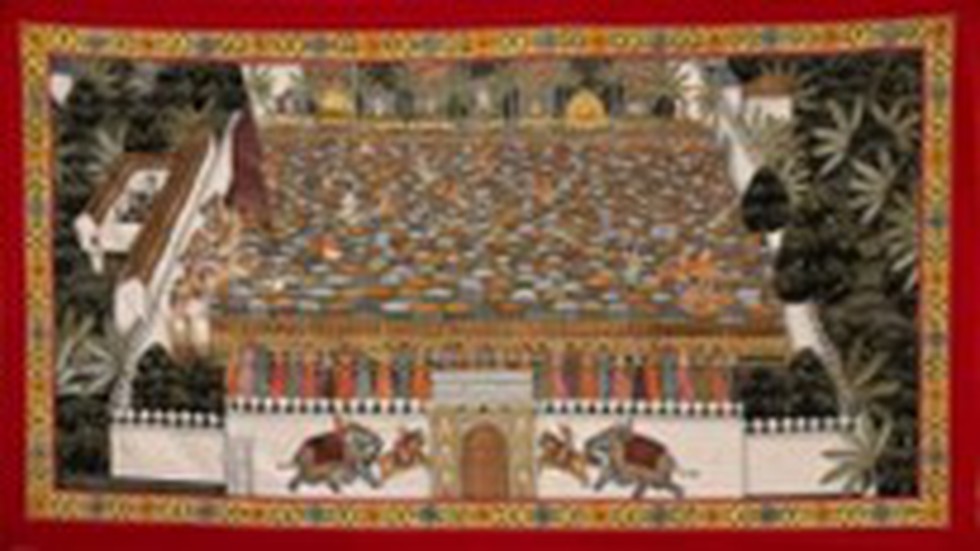
About Pichwai Painting:
- It is a traditional style of painting that originated in the state of Rajasthan, India.
- The history of this art form can be traced back to the 17th century.
- It is believed to have originated in the town of Nathdwara in Rajasthan.
- Theme: It mainly features the various stages of Lord Krishna’s life.
- Material used: The artists use stone pigments, especially for gold and silver tones. The brighter orange, red, chrome yellow and kesari colours come from vegetable dyes
- Other schools of Pichwai— Nathdwara, Kishangarh and Bundi in Rajasthan.
- They are often used to decorate the backdrops of Hindu temples, where they serve as a visual representation of the stories associated with Lord Krishna.
- These paintings have distinct features of a heavier body and large elongated eyes, with a broad nose of Shrinathji, similar to the features of the idol at the temple.
- The paintings are often filled with details, such as flowers, animals, and geometric patterns, which are arranged in a symmetrical and balanced composition.
- Some of the famous Pishwai Paintings are:
- Shrinathji in Black & Gold
- Ras Leela – Krishna with Radha
- Giriraja Pichwai – depicting Lord Krishna carrying Govardhana mountain on his little finger

